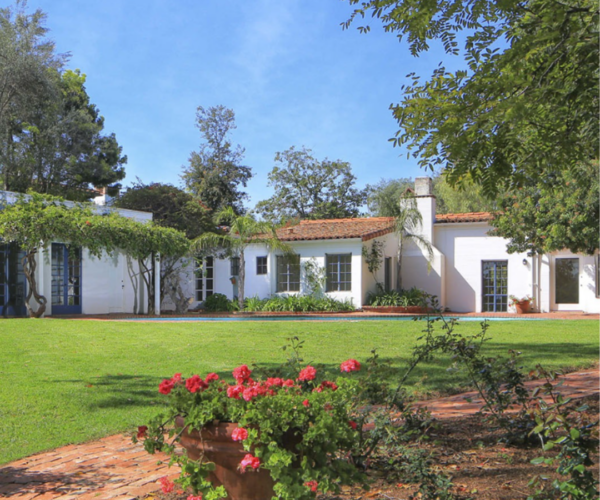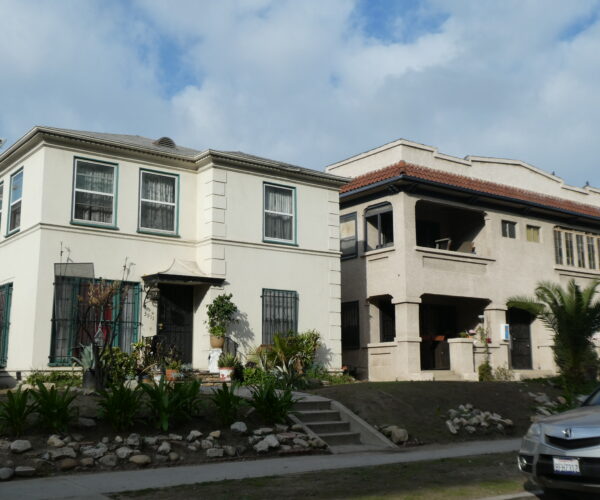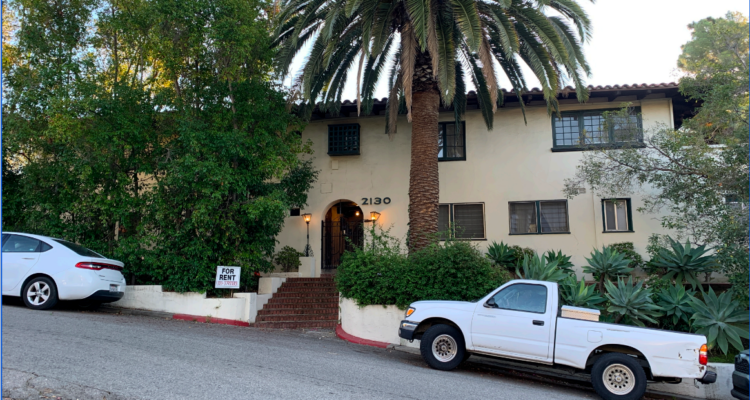
Place
Krotona Court & Grand Temple of the Rosy Cross
As the headquarters of the American Theosophical Society from 1912-1920, Krotona profoundly shaped the development of alternative spiritual movements in Los Angeles.
Saved
The Los Angeles City Council designated Krotona Court and the Grand Temple of the Rosy Cross as a Historic-Cultural Monument (HCM).
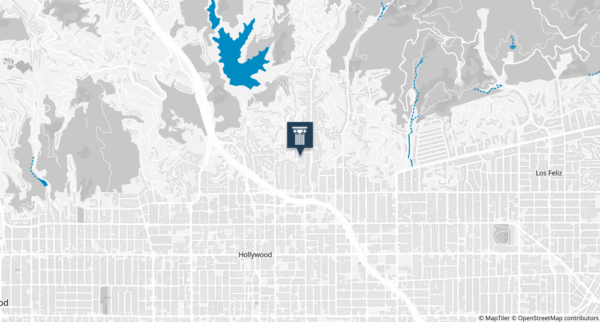
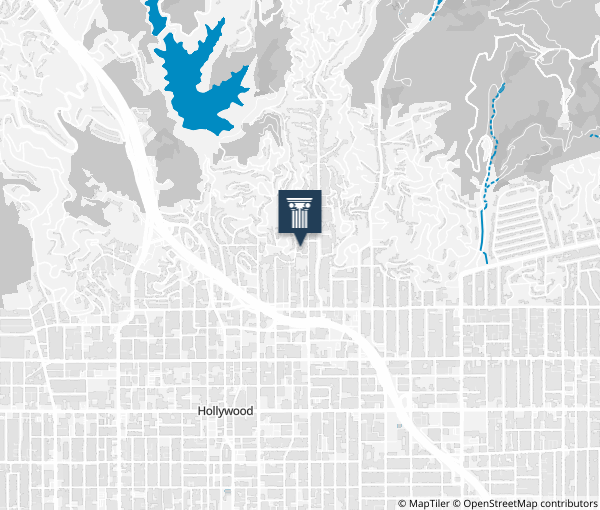
Place Details
Address
Neighborhood
Year
Style
Property Type
Government Officials
Attributes
Community
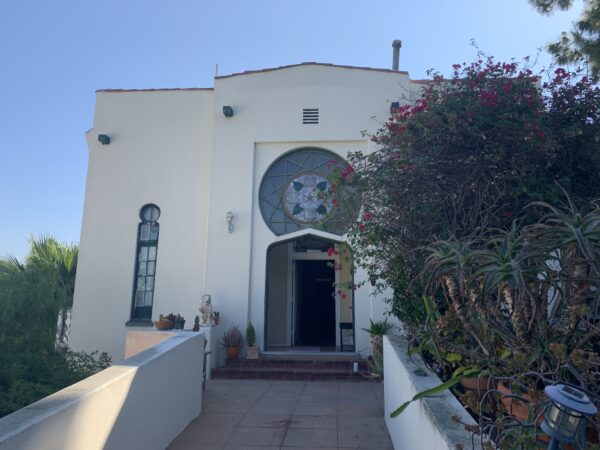
Los Angeles Conservancy
Overview
From 1912-1924, Krotona Court and the Grand Temple of the Rosy Cross were the epicenter of the Theosophical Krotona Colony.
The Theosophical Society was one of the earliest western organizations to introduced Buddhist, Hindu, and other Eastern and Southeastern Asian cultural practices to the United States. The Krotona Colony offered women — with race and class privilege — opportunities to express their intellect, creativity and spirituality far beyond what was permitted in mainstream society.
By 1926, Krotona Court and the Grand Temple of the Rosy Cross were converted into apartments. Over the years, the legacy of Theosophy has drawn innumerable Hollywood artists and spiritualists to reside in these RSO apartments.
The 1912 Krotona Court is an early excellent example of Spanish Colonial Revival architecture designed by Frank Mead & Richard Requa. The 1914 Grand Temple of the Rosy Cross, designed by Arthur & Alfred Heineman, is a rare Moorish Revival-style institutional property.
The Cultural Heritage Commission voted to designate the Conservancy’s Historic-Cultural Monument (HCM) nomination for Krotona Court and the Grand Temple of the Rosy Cross. We thank the owner and advocates for their support.
About This Place
About This Place
The 11-acre Krotona colony was a hub of intellectual, cultural, and spiritual activity intended “to teach the principles of universal brotherhood; to encourage the study of comparative religion, philosophy, and science and to investigate unexplained laws of nature and powers latent in man.” Open to the public, the Theosophical Society welcomed both dedicated Theosophists and the curious to attend lectures and concerts, browse Theosophical literature in the library and bookstore, or eat at the vegetarian cafeteria.
Theosophists remained at Krotona until 1924 when they relocated to the pastoral Ventura County community of Ojai. By 1926, actor and director Rupert Julian converted Krotona Court and the Grand Temple of the Rosy Cross into apartments. Over the decades, Hollywood names such as Scott Spiegel, Doris Day, Joel and Ethan Coen, Quentin Tarantino, Frances McDormand briefly found a home at Krotona.
Theosophists emphasized the deep value of Hindu and Buddhist traditions, and inverted rhetoric of colonial superiority through their eagerness to learn from Indian and East Asian cultures. Criticism from current scholars, however, note how imbuing non-western spiritual traditions with a layer of mysticism sometimes reinforced stereotypes about southeastern Asian cultures and decontextualized specific practices. These core tensions continue to play out in spiritual movements today.
For middle-to upper-class white women, Theosophy offered opportunities for autonomy, self-expression, and spiritual connection not found in other areas of society. While Theosophy’s first principle aims to “create a Universal Brotherhood of Man without distinction of race, creed, or color,” Theosophy’s practitioners were nonetheless shaped by prevailing racialized policies and beliefs of the era.
Krotona Court is a rare early example of the Spanish Colonial Revival style. It was designed by Mead & Requa, widely understood to be two of the most significant producers of Spanish Colonial Revival styles. Their travels through the American Southwest, South America, the Mediterranean, and Africa greatly influenced the development of the style. Mead & Requa’s design of Krotona reflects many character defining features of the style including stucco exterior walls; distinctively shaped and capped chimneys; low sloped clay tile roofs, courtyard, arched doorways, and the projecting wood lattice box screen on the front facing elevation. Krotona Court also demonstrates the latent influence of early modernism as Mead & Requa learned from their time working with Modernist pioneer architect Irving Gill. The eastern (rear) facade of Krotona bears some resemblance to Gil’s Dodge House, a proto-modern design also influenced by the Mission Revival style. Both facades are blank, abstract stucco walls with irregularly placed chimneys.
The Grand Temple of the Rosy Cross exemplifies the craft of Arthur and Alfred Heineman, foremost Southern Californian architects. Heineman & Heineman’s work in the Mission, Moorish, and Exotic Revivalism styles shaped Los Angeles’ unique architectural ecosystem. Heineman & Heineman also designed at least two residences for Theosophists near the Krotona Colony– the Ternary Building, or Duff Residence, at 6205 W. Temple Hill Drive and the Marie Russak Residence at 6101 W. Scenic Avenue. Both were identified by SurveyLA as eligible for designation at the local, state, and national level as excellent examples of Moorish Revival and Spanish Colonial Revival residential architecture.
Our Position
The L.A. Conservancy nominated the Krotona Court and Grand Temple of the Rosy Court for their significant social, cultural, and architectural history. These rare buildings are some of L.A.’s oldest purpose-built properties associated with alternative spiritual disciplines and utopian colonies. Today, they are also serve as important housing stock.
The Krotona nominations highlights the overlooked contributions of women artists and spiritual leaders in Los Angeles. It also raises important questions about the intersections of race, class, nationality, and religion relevant to today’s discourse about cultural exchange and appropriation.
